
|
Now it is 7.2 mag (May 25, Thomas Lehmann). It will pass close to the earth from spring to summer, and it is expected to brighten up to 6 mag. In the Southern Hemisphere, it keeps observable in excellent condition after this. In the Northern Hemisphere, it locates low in the south.
Date(TT) R.A. (2000) Decl. Delta r Elong. m1 Best Time(A, h)
May 28 22 56.10 -13 53.8 1.060 1.427 86 6.7 3:06 (305, 21)
June 4 22 33.26 -20 25.3 0.887 1.470 101 6.4 3:01 (318, 23)
|

|
It passed only 0.036 a.u. from the earth on Mar. 21-22, and brightened up to 3.9 mag (Mar. 21, Thomas Lehmann). It kept brightening even after the perihelion passage. However, it is fading now. It has already faded down to 9.4 mag (May 27, Marco Goiato). It keeps observable in excellent condition for a while after this both in the Northern Hemisphere and Southern Hemisphere. It may fade out very rapidly.
Date(TT) R.A. (2000) Decl. Delta r Elong. m1 Best Time(A, h)
May 28 16 49.16 7 29.6 0.430 1.403 150 10.2 0:27 ( 0, 63)
June 4 16 43.46 6 16.9 0.491 1.464 151 11.0 23:49 ( 0, 61)
|

|
Now it is 10.7 mag (May 26, Thomas Lehmann). It will be fading slowly after this. It is observable in excellent condition in the Northern Hemisphere. It is observable in the evening sky also in the Southern Hemisphere until August.
Date(TT) R.A. (2000) Decl. Delta r Elong. m1 Best Time(A, h)
May 28 11 0.08 36 37.9 2.769 2.863 84 10.9 20:48 (103, 63)
June 4 11 2.53 33 45.0 2.906 2.915 80 11.1 20:55 ( 99, 56)
|

|
Now it is 12.8 mag (May 12, Tsutomu Seki). Brightening very rapidly, but it is fainter than this ephemeris. It is expected to be observable at 11 mag in good condition until summer.
Date(TT) R.A. (2000) Decl. Delta r Elong. m1 Best Time(A, h)
May 28 11 50.04 12 31.2 1.088 1.674 105 11.8 20:48 ( 45, 60)
June 4 11 56.79 10 26.8 1.116 1.649 101 11.7 20:55 ( 52, 55)
|

|
Now it is 10.9 mag (May 24, Thomas Lehmann). It keeps 11 mag until summer. In the Northern Hemisphere, it will be getting lower after this, and will be unobservable in June. It locates somewhat low in the Southern Hemisphere, but it keeps observable until August.
Date(TT) R.A. (2000) Decl. Delta r Elong. m1 Best Time(A, h)
May 28 8 2.05 20 57.2 2.111 1.678 51 11.7 20:48 (101, 22)
June 4 8 20.81 20 8.6 2.132 1.657 49 11.7 20:55 (102, 18)
|
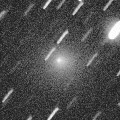
|
Now it is very bright as 12.1 mag (May 26, Thomas Lehmann). In the Northern Hemisphere, it is observable at 12 mag in excellent condition until June. It locates very low in the Southern Hemisphere.
Date(TT) R.A. (2000) Decl. Delta r Elong. m1 Best Time(A, h)
May 28 22 5.72 44 57.6 1.356 1.506 77 12.1 3:06 (240, 58)
June 4 21 24.12 49 18.1 1.246 1.549 85 12.2 3:01 (223, 68)
|

|
Now it is 12.7 mag (May 26, Thomas Lehmann). It keeps 12-13 mag for a long time from 2015 autumn to 2016 summer. In the Northern Hemispehre, it keeps observable in good condition for a long time. It keeps unobservable until July in the Southern Hemisphere.
Date(TT) R.A. (2000) Decl. Delta r Elong. m1 Best Time(A, h)
May 28 16 52.21 69 53.8 2.631 2.794 88 12.3 0:31 (180, 55)
June 4 16 23.41 67 45.6 2.633 2.816 89 12.4 23:27 (180, 57)
|

|
Now it is 12.5 mag (May 12, Hiroshi Abe). It brightened up to 6 mag from autumn to winter. Now it is fading. It is not observable after this in the Southern Hemisphere. It will be extremely low from May to June also in the Northern Hemisphere.
Date(TT) R.A. (2000) Decl. Delta r Elong. m1 Best Time(A, h)
May 28 5 13.30 46 38.1 3.941 3.077 27 12.9 20:48 (143, 8)
June 4 5 19.36 46 38.6 4.050 3.160 24 13.0 20:55 (147, 5)
|

|
It will brighten up to 11 mag from summer to autumn. However, it was faint as 18.2 mag in February (Feb. 17, Alexander Baransky), fainter than this ephemeris by 2 mag. It will appear in the morning sky soon, but it keeps low for some time.
Date(TT) R.A. (2000) Decl. Delta r Elong. m1 Best Time(A, h)
May 28 2 23.87 22 14.7 2.480 1.642 26 13.1 3:06 (244, 2)
June 4 2 45.69 23 21.6 2.421 1.602 28 12.9 3:01 (243, 3)
|

|
It is observable in excellent condition in the Southern Hemisphere. Now it is faint as 16.9 mag (May 18, J. Nicolas, F. Kugel, A. Klotz, C. Rinner, J.-F. Soulier).
Date(TT) R.A. (2000) Decl. Delta r Elong. m1 Best Time(A, h)
May 28 19 54.23 -25 19.3 5.219 5.934 131 13.4 3:06 (353, 29)
June 4 19 52.59 -25 22.6 5.138 5.932 138 13.4 3:01 ( 0, 30)
|
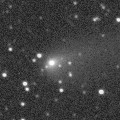
|
Now it is 13.1 mag (May 12, Hiroshi Abe). It keeps 13 mag for a while. It is observable in excellent condition in the Southern Hemisphere. But it locates somewhat low in the Northern Hemisphere.
Date(TT) R.A. (2000) Decl. Delta r Elong. m1 Best Time(A, h)
May 28 15 29.71 -23 2.7 1.386 2.387 168 13.7 23:04 ( 0, 32)
June 4 15 25.08 -22 52.0 1.425 2.406 160 13.8 22:32 ( 0, 32)
|
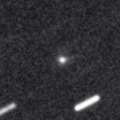
|
Now it is 14.6 mag (May 11, Hiroshi Abe). It will be observable at 14 mag in good condition from spring to summer.
Date(TT) R.A. (2000) Decl. Delta r Elong. m1 Best Time(A, h)
May 28 21 4.34 -11 22.8 1.875 2.438 111 14.2 3:06 (329, 38)
June 4 21 8.99 -11 7.1 1.808 2.444 117 14.2 3:01 (335, 40)
|

|
It is not observable now. It will be observable at 16.5 mag in September in the Northern Hemisphere, or in November in the Southern Hemisphere.
Date(TT) R.A. (2000) Decl. Delta r Elong. m1 Best Time(A, h)
May 28 5 15.79 17 49.1 2.957 1.986 13 14.2 20:48 (122,-12)
June 4 5 33.39 18 13.8 2.968 1.983 11 14.2 20:55 (125,-14)
|
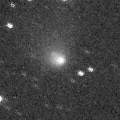
|
Now it is bright as 13.0 mag (May 6, Marco Goiato). In the Northern Hemisphere, it will be getting lower gradually after this, and it will be unobservable in late July. In the Southern Hemisphere, it keeps observable in good condition until autumn. But it will be fading slowly after this.
Date(TT) R.A. (2000) Decl. Delta r Elong. m1 Best Time(A, h)
May 28 12 30.75 -17 9.6 1.596 2.340 125 14.2 20:48 ( 13, 37)
June 4 12 30.97 -17 56.7 1.666 2.342 119 14.3 20:55 ( 22, 34)
|

|
Now it is 15.1 mag (Jan. 2, Ken-ichi Kadota). Distant object, but it keeps observable at 14-15 mag for a long time from 2015 to 2016.
Date(TT) R.A. (2000) Decl. Delta r Elong. m1 Best Time(A, h)
May 28 0 17.50 1 39.2 5.273 4.883 62 14.5 3:06 (279, 15)
June 4 0 22.79 1 55.6 5.179 4.884 67 14.5 3:01 (282, 19)
|

|
Now it is 15.9 mag (May 4, Hidetaka Sato), brighter than originally predicted. It will brighten up to 14 mag in summer. In the Southern Hemisphere, it keeps observable until winter, but it locates somewhat low. In the Northern Hemisphere, it is not observable now. It will appear in the morning sky in July, then it will be observable in excellent condition.
Date(TT) R.A. (2000) Decl. Delta r Elong. m1 Best Time(A, h)
May 28 1 39.33 -6 49.6 1.942 1.480 48 15.0 3:06 (274, -6)
June 4 1 59.77 -4 12.2 1.908 1.461 49 14.8 3:01 (272, -4)
|

|
It will brighten up to 13 mag in summer. But it keeps unobservable for a long time. It will appear in the morning sky in December, when the comet will be fainter than 15 mag.
Date(TT) R.A. (2000) Decl. Delta r Elong. m1 Best Time(A, h)
May 28 5 8.89 18 4.4 2.890 1.911 11 15.1 20:48 (123,-13)
June 4 5 27.18 18 8.7 2.840 1.849 9 14.9 20:55 (126,-15)
|
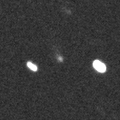
|
Now it is bright as 14.9 mag (May 4, Hidetaka Sato). It keeps 15 mag until autumn. In the Southern Hemisphere, it keeps observable for a long time. It will be unobservable after this in the Northern Hemisphere.
Date(TT) R.A. (2000) Decl. Delta r Elong. m1 Best Time(A, h)
May 28 5 13.76 -36 37.2 2.654 2.309 59 15.1 20:48 ( 69,-42)
June 4 5 28.54 -38 14.0 2.609 2.302 61 15.0 20:55 ( 69,-46)
|
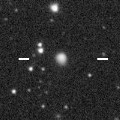
|
Now it is 14.8 mag (May 19, Artyom Novichonok). It is expected to brighten up to 7 mag in 2017 summer. In the Northern Hemisphere, it becomes low temporarily in summer, but it keeps observable in good condition until the highlight while the comet will be brightening. In the Southern Hemisphere, it is not observable until early 2017.
Date(TT) R.A. (2000) Decl. Delta r Elong. m1 Best Time(A, h)
May 28 7 32.41 57 9.6 5.274 4.685 49 15.3 20:48 (141, 31)
June 4 7 41.82 56 42.0 5.261 4.622 46 15.3 20:55 (141, 28)
|
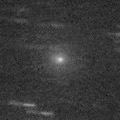
|
It brightened rapidly up to 11.0 mag in spring (Apr. 9, C. Rinner, F. Kugel,�$B!!�(BA. Klotz, J. Nicolas). It is fading now. In the Northern Hemisphere, it will be unobservable soon. It keeps observable until July in the Southern Hemisphere, but it keeps extremely low.
Date(TT) R.A. (2000) Decl. Delta r Elong. m1 Best Time(A, h)
May 28 6 54.83 16 10.4 2.069 1.398 36 15.3 20:48 (106, 6)
June 4 7 19.61 15 19.3 2.131 1.444 36 15.6 20:55 (106, 3)
|
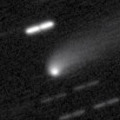
|
It brightened very rapidly in 2015 spring, and reached up to 13.8 mag (May 11, Sandor Szabo). It is bright as 14.4 mag still now (May 12, Yasukazu Ikari). It is observable in excellent condition in the Southern Hemisphere. But it locates somewhat low in the Northern Hemisphere.
Date(TT) R.A. (2000) Decl. Delta r Elong. m1 Best Time(A, h)
May 28 13 41.93 -27 8.4 3.387 4.246 143 15.6 21:16 ( 0, 28)
June 4 13 40.79 -26 39.2 3.474 4.275 137 15.7 20:55 ( 2, 28)
|
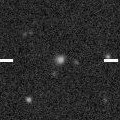
|
Now it is 16.3 mag (May 20, Artyom Novichonok). It is expected to brighten up to 7 mag in 2017 spring. But it locates somewhat low at the high light.
Date(TT) R.A. (2000) Decl. Delta r Elong. m1 Best Time(A, h)
May 28 11 6.11 -0 16.1 4.309 4.607 100 16.3 20:48 ( 47, 44)
June 4 11 6.62 -0 8.4 4.349 4.537 94 16.3 20:55 ( 56, 39)
|

|
Now it is 16.3 mag (May 12, Yasukazu Ikari). It will be getting lower after this, and will be unobservable in August. It will brighten up to 14 mag in 2017. The perihelion distance increases from 2.4 a.u. to 2.9 a.u. in this apparition, and the comet will not brighten as before.
Date(TT) R.A. (2000) Decl. Delta r Elong. m1 Best Time(A, h)
May 28 11 22.35 13 29.9 3.407 3.704 99 16.3 20:48 ( 56, 57)
June 4 11 24.42 12 55.3 3.491 3.688 93 16.3 20:55 ( 64, 51)
|

|
It brightened up to 3.7 mag and became a naked eye comet in mid January in 2015 (Jan. 13, Marek Biely). Now it is fading. It has already faded down to 16.0 mag (May 7, Yuji Ohshima). In the Northern Hemisphere, it keeps observable for a long time until the comet fades out. It locates somewhat low in the Southern Hemisphere.
Date(TT) R.A. (2000) Decl. Delta r Elong. m1 Best Time(A, h)
May 28 18 4.34 27 1.8 5.111 5.757 125 16.4 1:42 ( 0, 82)
June 4 17 58.88 26 56.2 5.142 5.819 127 16.5 1:09 ( 0, 82)
|
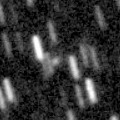
|
Now it is 17.0 mag (Feb. 7, iTelescope Observatory, Siding Spring). It keeps 16.5 mag for a long time in 2016, and it will be observable in excellent condition in the Southern Hemisphere. It is hardly observable in the Northern Hemisphere.
Date(TT) R.A. (2000) Decl. Delta r Elong. m1 Best Time(A, h)
May 28 3 40.18 -36 57.8 3.781 3.376 59 16.7 3:06 (290,-44)
June 4 3 41.84 -36 49.0 3.748 3.380 61 16.7 3:01 (291,-40)
|
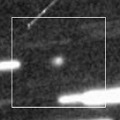
|
Now it is 17.2 mag (May 8, Space Surveillance Telescope, Atom Site). It will be observable at 13 mag for a long time from 2017 to 2018. In 2016, it keeps observable at 16-17 mag in good condition until autumn.
Date(TT) R.A. (2000) Decl. Delta r Elong. m1 Best Time(A, h)
May 28 20 11.16 -12 28.6 5.845 6.471 124 16.7 3:06 (346, 41)
June 4 20 6.81 -12 9.7 5.706 6.427 131 16.7 3:01 (355, 43)
|

|
Now it is bright as 15.9 mag (Apr. 9, Hidetaka Sato). It keeps 16 mag for a long time from 2016 to 2017. In 2016, it is observable in excellent condition in the Southern Hemisphere, but it locates extremely low in the Northern Hemispehre.
Date(TT) R.A. (2000) Decl. Delta r Elong. m1 Best Time(A, h)
May 28 12 0.63 -34 16.3 3.037 3.678 122 16.7 20:48 ( 16, 19)
June 4 12 3.59 -32 32.1 3.072 3.647 117 16.7 20:55 ( 23, 18)
|
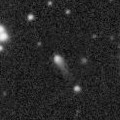
|
Now it is 16.5 mag (May 11, D. Buczynski). It keeps 16.5 mag from 2016 to 2017. It is observable in good condition in the Northern Hemisphere. In the Southern Hemisphere, it locates low in 2016, and it is not observable in 2017.
Date(TT) R.A. (2000) Decl. Delta r Elong. m1 Best Time(A, h)
May 28 17 9.01 32 34.2 5.757 6.389 124 16.7 0:47 ( 0, 88)
June 4 17 4.66 33 23.3 5.755 6.379 124 16.7 0:15 ( 0, 88)
|
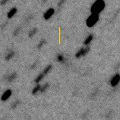
|
It brightened rapidly up to 15.1 mag in May (May 12, Yuji Ohshima). It will fade out rapidly after this. It is observable in excellent condition in the Southern Hemisphere. It locates low in the Northern Hemisphere.
Date(TT) R.A. (2000) Decl. Delta r Elong. m1 Best Time(A, h)
May 28 14 59.31 -37 40.0 1.089 2.057 156 16.7 22:33 ( 0, 17)
June 4 14 51.08 -38 43.2 1.127 2.069 150 16.9 21:57 ( 0, 16)
|

|
It brightened rapidly up to 15.6 mag (May 13, iTelescope Observatory, Siding Spring). It keeps observable at 16 mag until autumn.
Date(TT) R.A. (2000) Decl. Delta r Elong. m1 Best Time(A, h)
May 28 12 52.92 -16 36.0 1.457 2.255 130 16.7 20:48 ( 6, 38)
June 4 12 54.76 -15 34.8 1.493 2.231 124 16.7 20:55 ( 16, 38)
|
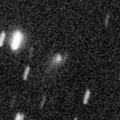
|
It brightened rapidly, and reached up to 15.5 mag (Feb. 11, Yasukazu Ikari). Now it is fading. It has already faded down to 16.5 mag (May 9, D. Buczynski). It keeps observable until August when the comet becomes fainter than 18 mag in the Northern Hemisphere. It will be unobservable soon in the Southern Hemisphere.
Date(TT) R.A. (2000) Decl. Delta r Elong. m1 Best Time(A, h)
May 28 8 53.36 42 24.6 2.868 2.518 59 16.8 20:48 (119, 40)
June 4 9 4.53 43 4.4 2.944 2.523 56 16.9 20:55 (121, 36)
|
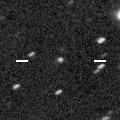
|
Now it is 16.9 mag (May 7, K. Sarneczky). It brightened rapidly, and became brighter than originally expected. It keeps 17 mag until 2017. It is observable in excellent condition in the Northern Hemisphere. It is not observable in the Southern Hemisphere.
Date(TT) R.A. (2000) Decl. Delta r Elong. m1 Best Time(A, h)
May 28 14 7.89 74 9.1 7.361 7.290 82 16.8 21:40 (180, 51)
June 4 13 51.98 73 22.1 7.397 7.287 79 16.8 20:57 (180, 52)
|
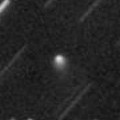
|
Now it is 16.4 mag (May 10, Catalina Sky Survey). It keeps brightening even after the perihelion passage. It keeps observable at 17 mag in good condition until autumn.
Date(TT) R.A. (2000) Decl. Delta r Elong. m1 Best Time(A, h)
May 28 14 47.88 5 10.0 5.648 6.504 145 16.9 22:22 ( 0, 60)
June 4 14 44.38 5 52.9 5.731 6.525 138 16.9 21:51 ( 0, 61)
|

|
It brightened up to 15 mag from late 2014 to early 2016. Now it is fading slowly. In the Northern Hemisphere, it will be observable at 17 mag in autumn in good condition. It locates extremely low in the Southern Hemisphere.
Date(TT) R.A. (2000) Decl. Delta r Elong. m1 Best Time(A, h)
May 28 0 23.72 32 22.6 5.264 4.727 53 16.9 3:06 (249, 30)
June 4 0 22.80 33 34.9 5.200 4.754 58 16.9 3:01 (250, 35)
|

|
Now it is 19.3 mag (May 4, Hidetaka Sato). It will brighten up to 16.5 mag in summer and will be observable in good condition.
Date(TT) R.A. (2000) Decl. Delta r Elong. m1 Best Time(A, h)
May 28 18 16.17 -13 50.8 1.971 2.902 151 17.4 1:54 ( 0, 41)
June 4 18 12.17 -13 17.0 1.913 2.879 158 17.2 1:23 ( 0, 42)
|

|
It brightened up to 13-14 mag from 2014 to 2015. Now it is fading. It has already faded down to 18.1 mag (Apr. 23, Slooh.com Canary Islands Observatory). It will be observable at 17 mag in 2016.
Date(TT) R.A. (2000) Decl. Delta r Elong. m1 Best Time(A, h)
May 28 23 16.43 -3 9.9 5.185 5.074 78 17.2 3:06 (293, 24)
June 4 23 19.50 -2 57.3 5.122 5.117 84 17.2 3:01 (297, 28)
|

|
First return of a new periodic comet which brightened up to 16.5 mag in 2008. The condition of this apparition is very good. It is expected to brighten up to 15.5 mag in autumn and will be observable in good condition.
Date(TT) R.A. (2000) Decl. Delta r Elong. m1 Best Time(A, h)
May 28 23 42.00 -23 18.2 2.583 2.625 81 17.4 3:06 (304, 6)
June 4 23 50.51 -22 29.4 2.481 2.603 85 17.3 3:01 (306, 9)
|

|
It was observed as bright as 13-14 mag for a long time from 2011 to 2014. Now it is fading. It is observable in excellent condition in the Southern Hemisphere. It locates extremely low in the Northern Hemisphere. No observations have been reported since August, 2015.
Date(TT) R.A. (2000) Decl. Delta r Elong. m1 Best Time(A, h)
May 28 17 46.05 -36 27.7 8.556 9.491 156 17.3 1:24 ( 0, 19)
June 4 17 41.34 -36 43.1 8.556 9.525 161 17.3 0:52 ( 0, 18)
|
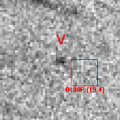
|
It is expected to brighten up to 16 mag and observable in good condition in autumn. However, it is so faint as 19.7 mag now (Apr. 16, A. Maury, J.-B. de Vanssay, J.-G. Bosch, J.-F. Soulier).
Date(TT) R.A. (2000) Decl. Delta r Elong. m1 Best Time(A, h)
May 28 22 54.30 -14 28.6 2.980 3.107 87 17.5 3:06 (306, 21)
June 4 23 0.11 -13 54.3 2.863 3.083 92 17.4 3:01 (309, 24)
|

|
Now it is 16.8 mag (May 10, Catalina Sky Survey). It will be fading after this, and will be fainter than 18 mag soon.
Date(TT) R.A. (2000) Decl. Delta r Elong. m1 Best Time(A, h)
May 28 14 33.00 1 39.1 1.813 2.707 145 17.4 22:07 ( 0, 57)
June 4 14 29.77 0 49.9 1.877 2.724 138 17.6 21:36 ( 0, 56)
|

|
It brightened up to 11-12 mag in 2012. It has already faded down to 18.3 mag (May 1, J. Oey, P. Camilleri, H. Williams). It will be unobservable in June in the Northern Hemisphere, or in July in the Southern Hemisphere.
Date(TT) R.A. (2000) Decl. Delta r Elong. m1 Best Time(A, h)
May 28 10 20.77 -2 10.8 11.440 11.502 90 17.4 20:48 ( 57, 35)
June 4 10 20.44 -2 2.5 11.597 11.539 84 17.5 20:55 ( 64, 29)
|
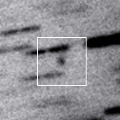
|
Now it is 18.0 mag (Apr. 12, A. Maury, J.-B. de Vanssay, J.-G. Bosch, J.-F. Soulier). It keeps observable at 17.5 mag in good condition from spring to autumn in the Southern Hemisphere. It is not observable in the Northern Hemisphere.
Date(TT) R.A. (2000) Decl. Delta r Elong. m1 Best Time(A, h)
May 28 18 12.52 -63 59.4 4.285 5.037 133 17.7 1:51 ( 0, -9)
June 4 18 8.31 -64 17.3 4.248 5.028 136 17.7 1:19 ( 0, -9)
|

|
Although it was bright as 17 mag at the discovery in 2006, it faded out before the perihelion passage in 2008, and it became lost. Now it is fainter than 22 mag (June 15, 2015, Erwin Schwab, Marco Micheli).
Date(TT) R.A. (2000) Decl. Delta r Elong. m1 Best Time(A, h)
May 28 15 41.31 6 36.9 3.573 4.482 150 17.8 23:15 ( 0, 62)
June 4 15 37.50 6 30.6 3.596 4.475 146 17.8 22:44 ( 0, 61)
|

|
Very far object. Outburst occured on Feb. 20, 2015, and it brightened up to 15 mag. Now it is 16.7 mag (Apr. 4, Hidetaka Sato). It is observable in excellent condition in the Southern Hemisphere. It locates somewhat low in the Northern Hemisphere.
Date(TT) R.A. (2000) Decl. Delta r Elong. m1 Best Time(A, h)
May 28 13 11.73 -23 28.7 8.424 9.187 136 17.8 20:48 ( 1, 31)
June 4 13 11.05 -23 9.9 8.503 9.190 130 17.8 20:55 ( 10, 31)
|
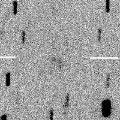
|
New comet. It was bright as 15.6 mag in early May (May 6, Hidetaka Sato). It goes away from the earth rapidly, and it will be fainter than 18 mag soon.
Date(TT) R.A. (2000) Decl. Delta r Elong. m1 Best Time(A, h)
May 28 10 10.84 2 14.3 1.352 1.647 87 17.8 20:48 ( 63, 37)
June 4 10 13.82 6 44.9 1.547 1.686 79 18.2 20:55 ( 73, 34)
|

|
Now it is 18.5 mag (Apr. 14, Hidetaka Sato). It will brighten up to 16 mag and will be observable in good condition in 2017. In 2016, it is observable in excellent condition in the Southern Hemisphere, but it keeps low in the Northern Hemisphere.
Date(TT) R.A. (2000) Decl. Delta r Elong. m1 Best Time(A, h)
May 28 19 32.63 -38 41.4 2.681 3.477 135 18.0 3:06 (359, 16)
June 4 19 30.34 -39 7.6 2.602 3.458 141 17.8 2:41 ( 0, 16)
|
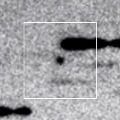
|
It keeps 16 mag for a long time from 2017 to 2018. Now it is 17.8 mag (May 13, J. Oey, P. Camilleri, H. Williams). In the Southern Hemisphere, it keeps observable in good condition until early summer. It will be unobservable soon in the Northern Hemispehre.
Date(TT) R.A. (2000) Decl. Delta r Elong. m1 Best Time(A, h)
May 28 8 56.53 -18 59.3 6.770 6.647 78 17.9 20:48 ( 60, 9)
June 4 8 57.80 -18 4.6 6.842 6.618 73 17.9 20:55 ( 65, 3)
|
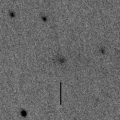
|
Now it is 16.8 mag (Apr. 12, Hidetaka Sato). It was expected to brighten up to 14 mag from winter to summer. But it is much fainter actually. It will be observable in excellent condition in the Southern Hemisphere. It locates low in the Northern Hemisphere.
Date(TT) R.A. (2000) Decl. Delta r Elong. m1 Best Time(A, h)
May 28 16 20.50 -39 56.4 1.709 2.690 161 17.9 23:54 ( 0, 15)
June 4 16 15.80 -40 7.5 1.754 2.733 160 18.0 23:22 ( 0, 15)
|
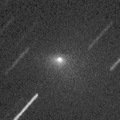
|
First return of an object discovered as an asteroid 2007 VA85 in 2007. It brightened very rapidly since mid February, and brightened up to 11.3 mag in spring (Mar. 5, Juan Jose Gonzalez). In the Northern Hemisphere, it locates extremely low in May, but it will be observable in the morning sky after June. However, it may fade out very rapidly and may be fainter than 18 mag. It keeps unobservable until September in the Southern Hemisphere.
Date(TT) R.A. (2000) Decl. Delta r Elong. m1 Best Time(A, h)
May 28 2 55.08 45 25.6 2.121 1.338 29 18.3 3:06 (222, 11)
June 4 2 50.54 47 5.3 2.106 1.390 34 18.5 3:01 (223, 16)
|
|
![]()
 29P/Schwassmann-Wachmann 1
29P/Schwassmann-Wachmann 1 116P/Wild 4
116P/Wild 4 53P/Van Biesbroeck
53P/Van Biesbroeck 118P/Shoemaker-Levy 4
118P/Shoemaker-Levy 4 77P/Longmore
77P/Longmore C/2011 KP36 ( Spacewatch )
C/2011 KP36 ( Spacewatch ) 146P/Shoemaker-LINEAR
146P/Shoemaker-LINEAR C/2015 TQ209 ( LINEAR )
C/2015 TQ209 ( LINEAR ) C/2015 T4 ( PanSTARRS )
C/2015 T4 ( PanSTARRS ) C/2015 V2 ( Johnson )
C/2015 V2 ( Johnson ) 104P/Kowal 2
104P/Kowal 2 C/2014 W11 ( PanSTARRS )
C/2014 W11 ( PanSTARRS ) C/2015 ER61 ( PanSTARRS )
C/2015 ER61 ( PanSTARRS ) 65P/Gunn
65P/Gunn C/2014 Q2 ( Lovejoy )
C/2014 Q2 ( Lovejoy ) C/2015 B2 ( PanSTARRS )
C/2015 B2 ( PanSTARRS ) C/2015 O1 ( PanSTARRS )
C/2015 O1 ( PanSTARRS ) C/2016 B1 ( NEOWISE )
C/2016 B1 ( NEOWISE ) C/2014 OE4 ( PanSTARRS )
C/2014 OE4 ( PanSTARRS ) 100P/Hartley 1
100P/Hartley 1 237P/LINEAR
237P/LINEAR C/2015 Y1 ( LINEAR )
C/2015 Y1 ( LINEAR ) C/2014 R3 ( PanSTARRS )
C/2014 R3 ( PanSTARRS ) C/2015 LC2 ( PanSTARRS )
C/2015 LC2 ( PanSTARRS ) C/2014 A4 ( SONEAR )
C/2014 A4 ( SONEAR ) 219P/LINEAR
219P/LINEAR C/2012 F3 ( PanSTARRS )
C/2012 F3 ( PanSTARRS ) P/2008 J3 ( McNaught )
P/2008 J3 ( McNaught ) C/2010 S1 ( LINEAR )
C/2010 S1 ( LINEAR ) 188P/LINEAR-Mueller
188P/LINEAR-Mueller 180P/NEAT
180P/NEAT C/2006 S3 ( LONEOS )
C/2006 S3 ( LONEOS ) C/2015 H2 ( PanSTARRS )
C/2015 H2 ( PanSTARRS ) P/2006 F1 ( Kowalski )
P/2006 F1 ( Kowalski ) C/2013 C2 ( Tenagra )
C/2013 C2 ( Tenagra ) C/2016 J2 ( Denneau )
C/2016 J2 ( Denneau ) 47P/Ashbrook-Jackson
47P/Ashbrook-Jackson C/2016 A1 ( PanSTARRS )
C/2016 A1 ( PanSTARRS ) C/2014 Y1 ( PanSTARRS )
C/2014 Y1 ( PanSTARRS ) 333P/LINEAR
333P/LINEAR![]()









































